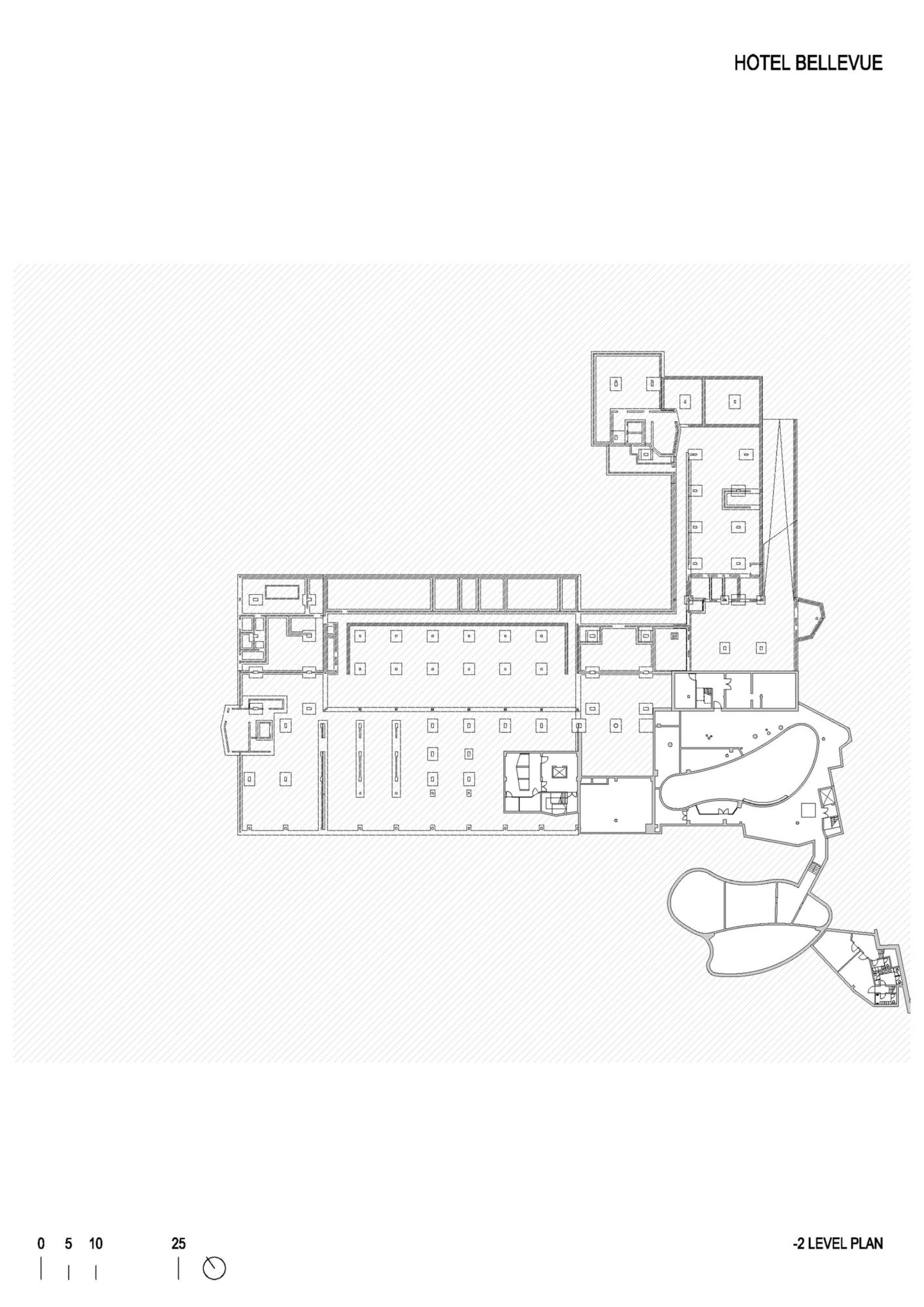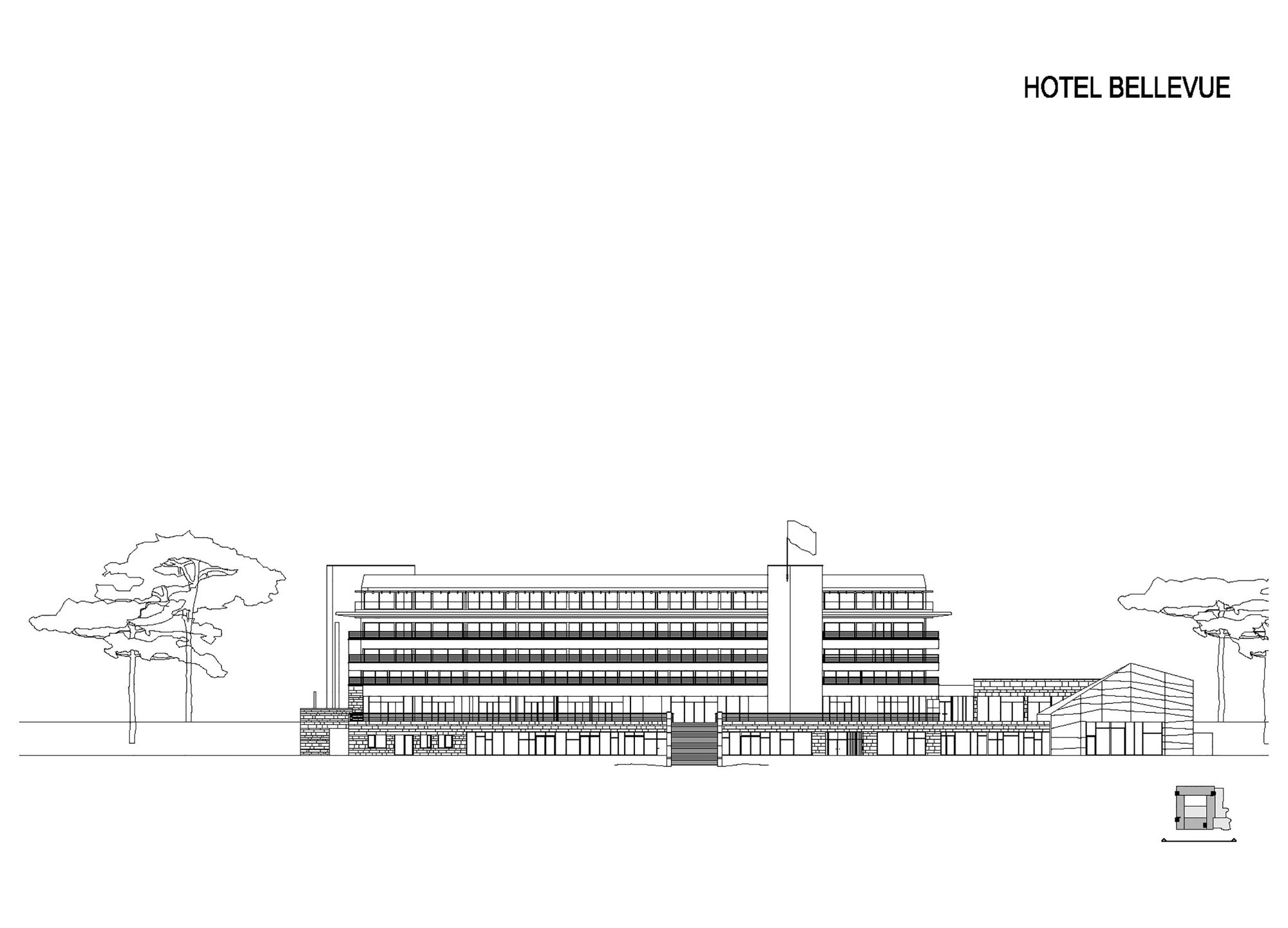Boasting 376,737 square feet of space as well as a contemporary design signed by Rusan Arhitektura, Hotel Bellevue is located in Lošinj, Croatia and opened its doors in 2014 after an extensive renovation. Built in 1967, the establishment featured outdated furnishings and finishes, and so it had to be renovated in order to meet modern standards of comfort and elegance. The original design concept of a hotel wrapped around central atrium was kept intact. The new layout includes a glazed passage that can open up completely during the warm season. Its floors as well as the atrium terraces received teak wood and teak furnishings.
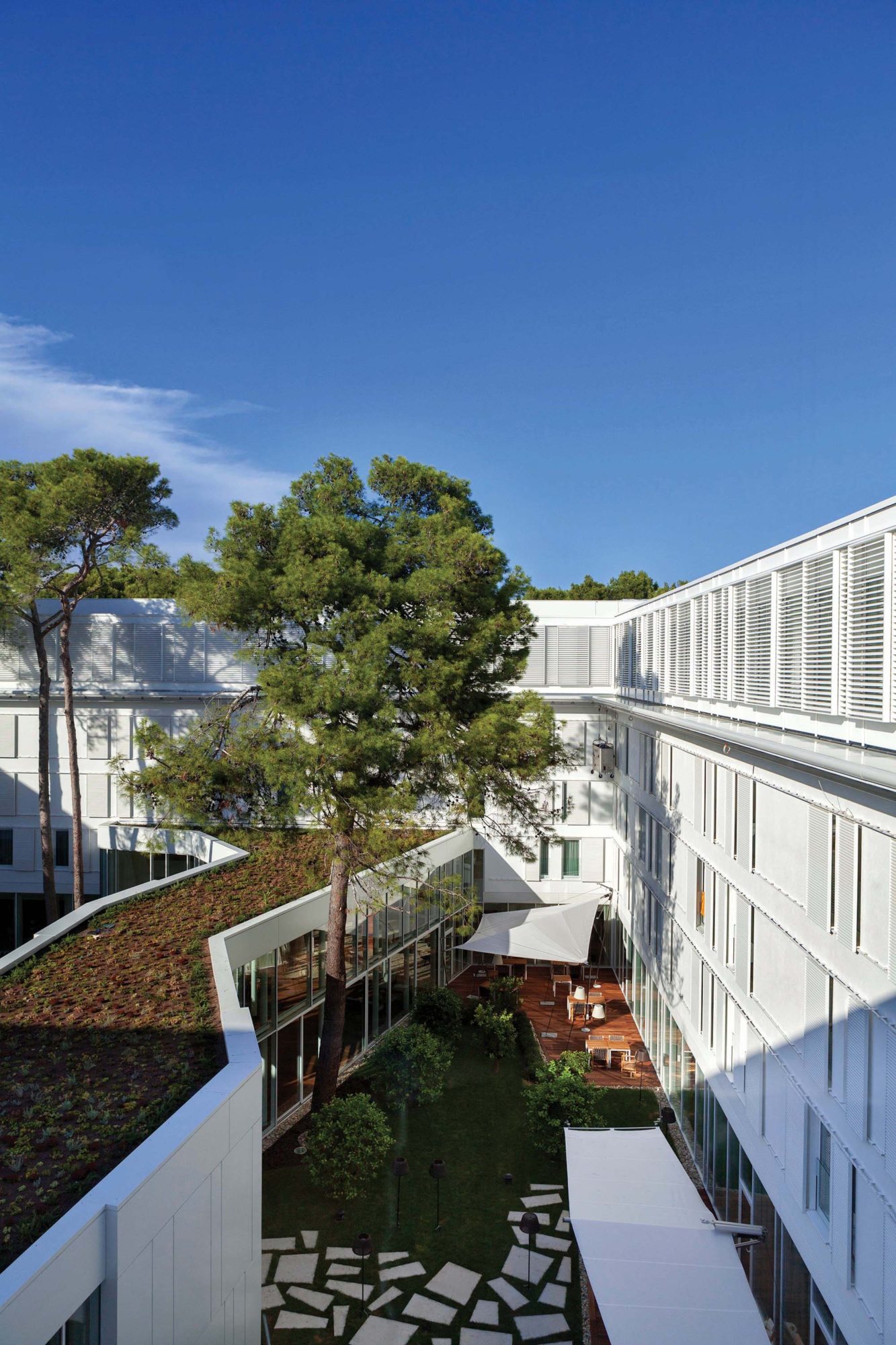
The existing pine trees located in the atrium are complemented by lemon, orange and grapefruit trees for an extra touch of naturalness. Once inside, visitors are greeted by the public areas of the hotel, including the lobby, various stores, the reception area, a pair of meeting halls, a lounge bar, three restaurants and a three-part congress hall. Below the entrance level, the architects inserted the fitness, pool and the wellness facilities.
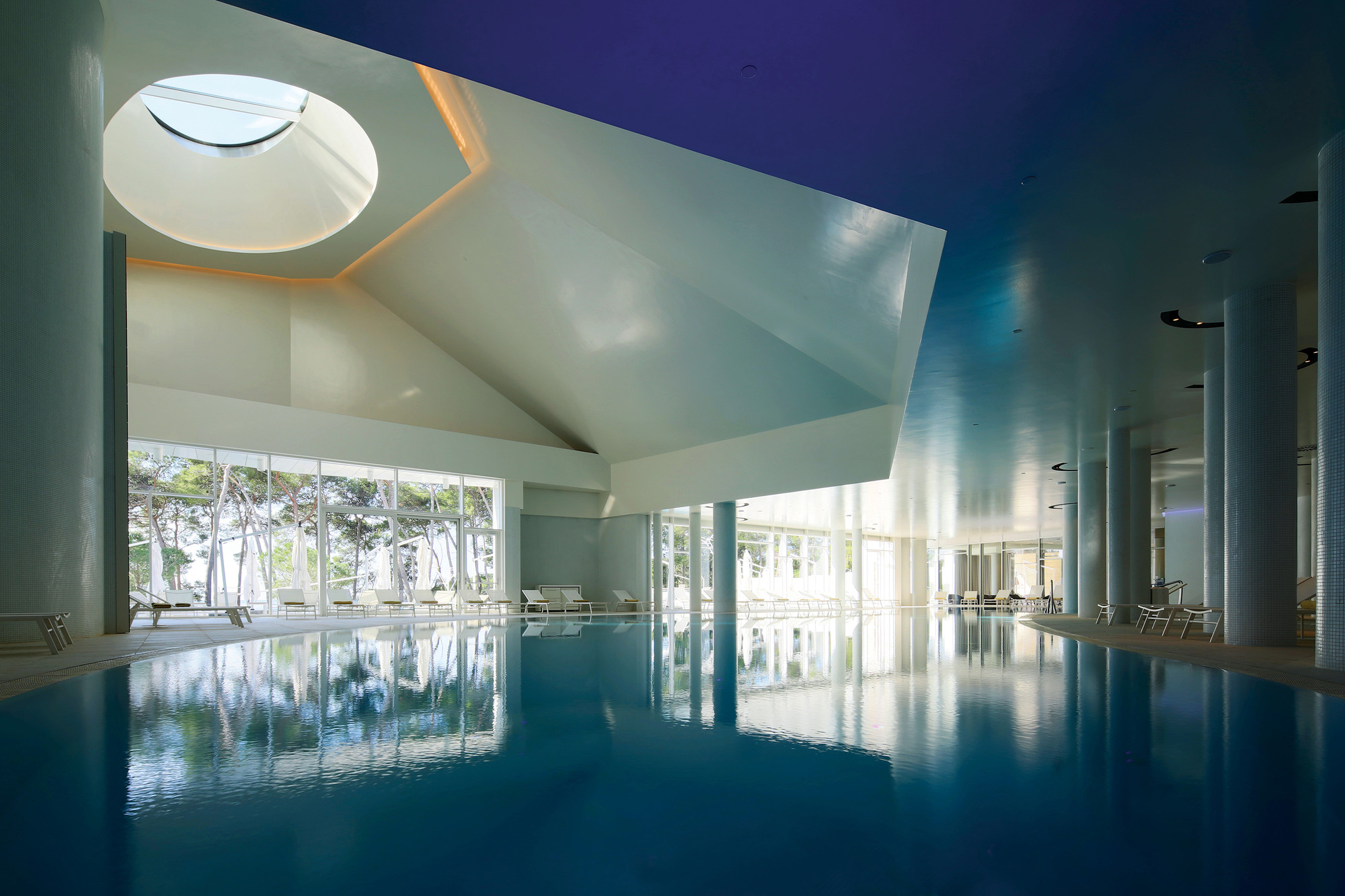
Complementing the first and second floors, two new floors comprise a number of contemporary accommodation units, some of which flaunt covered terraces as well as high-end amenities such as hydro massage bathtubs.
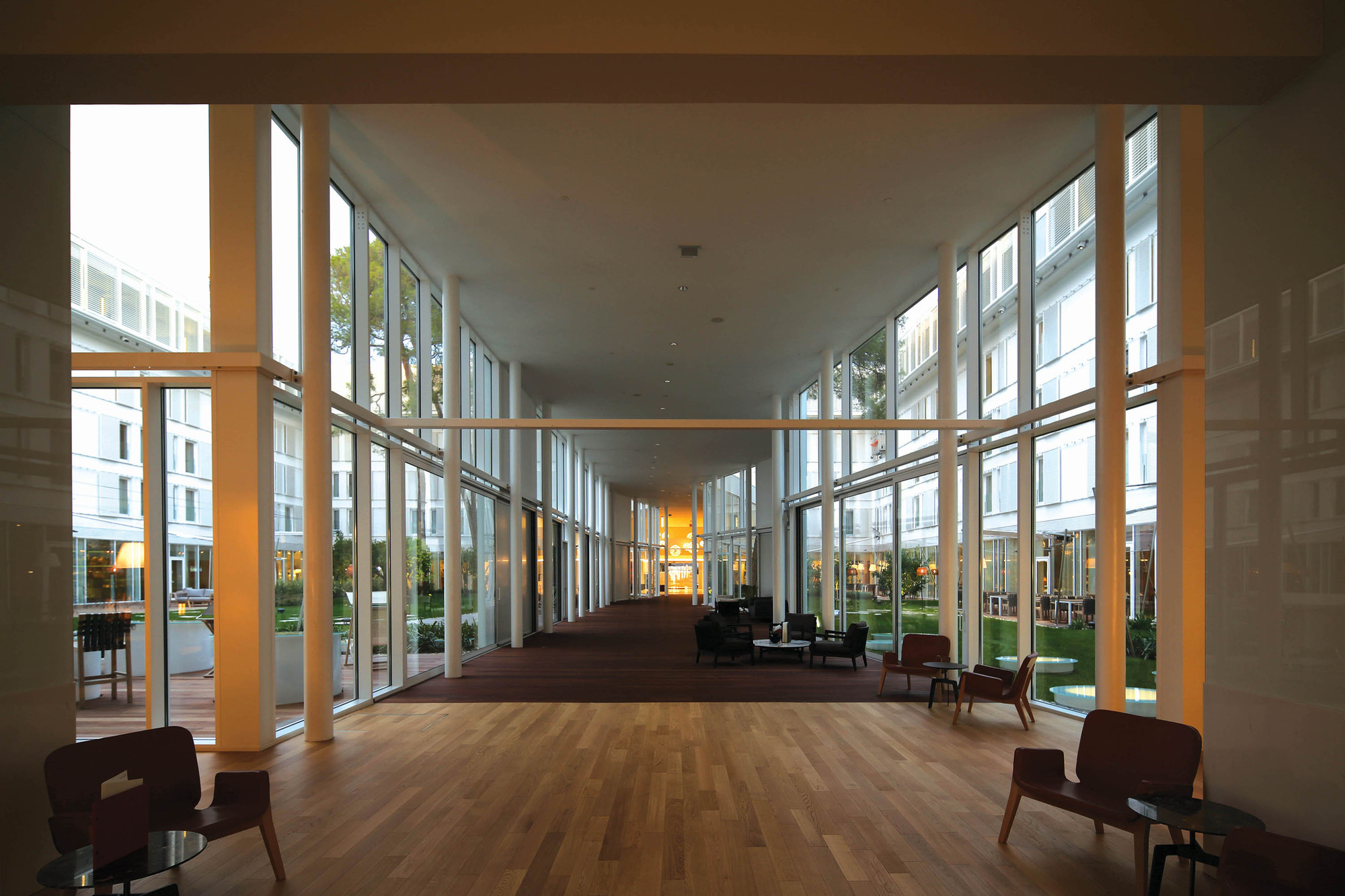
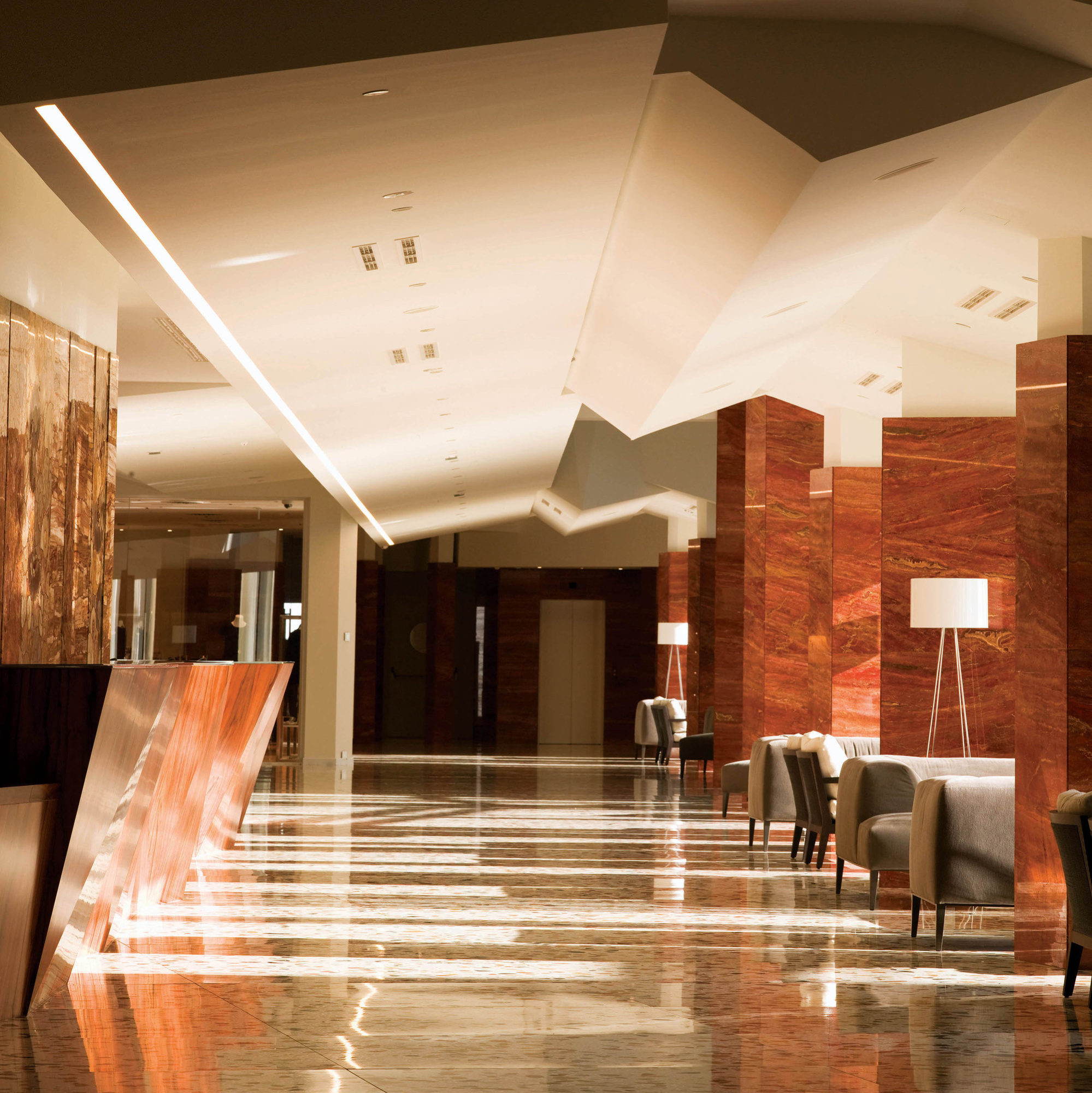
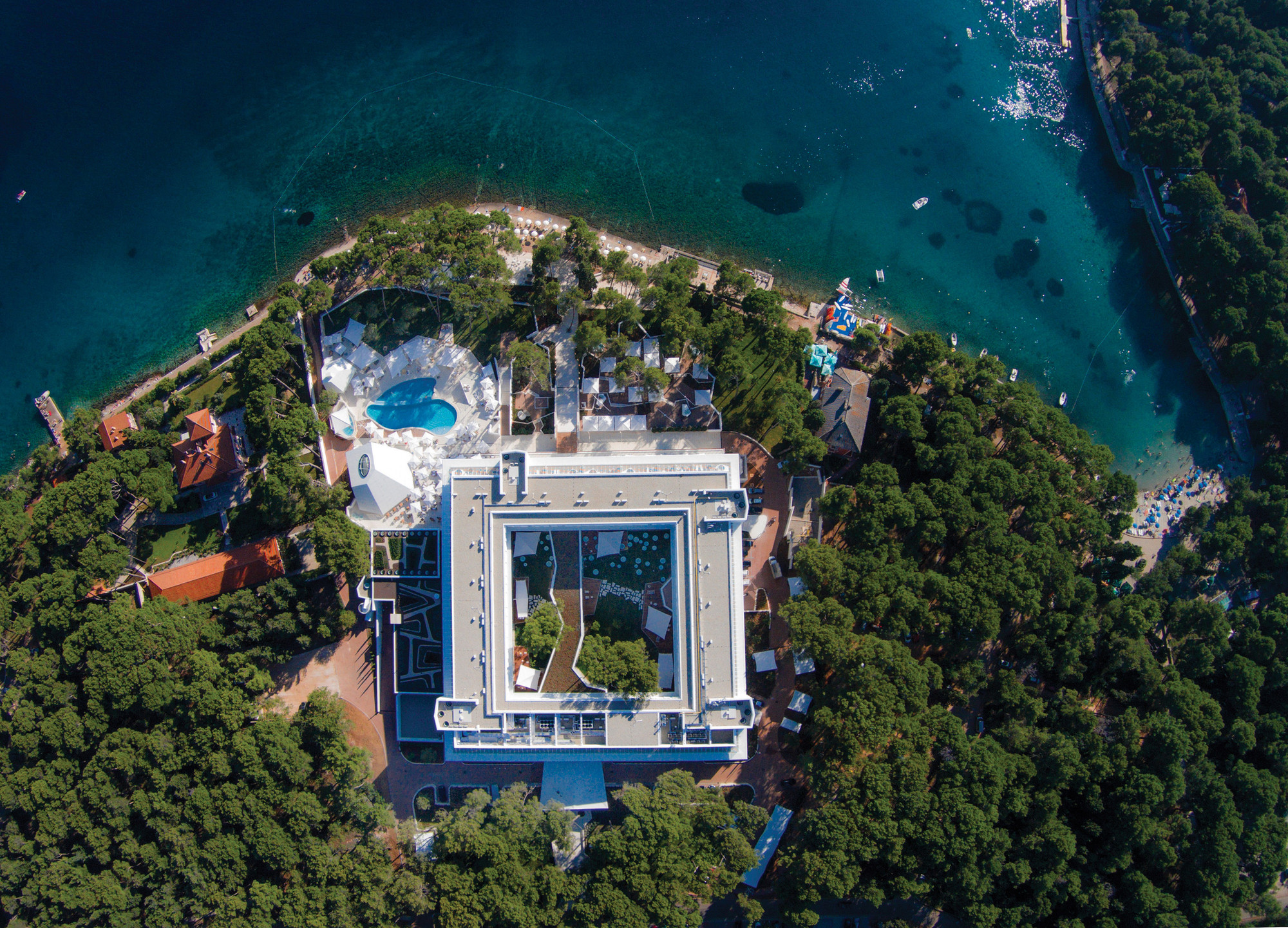
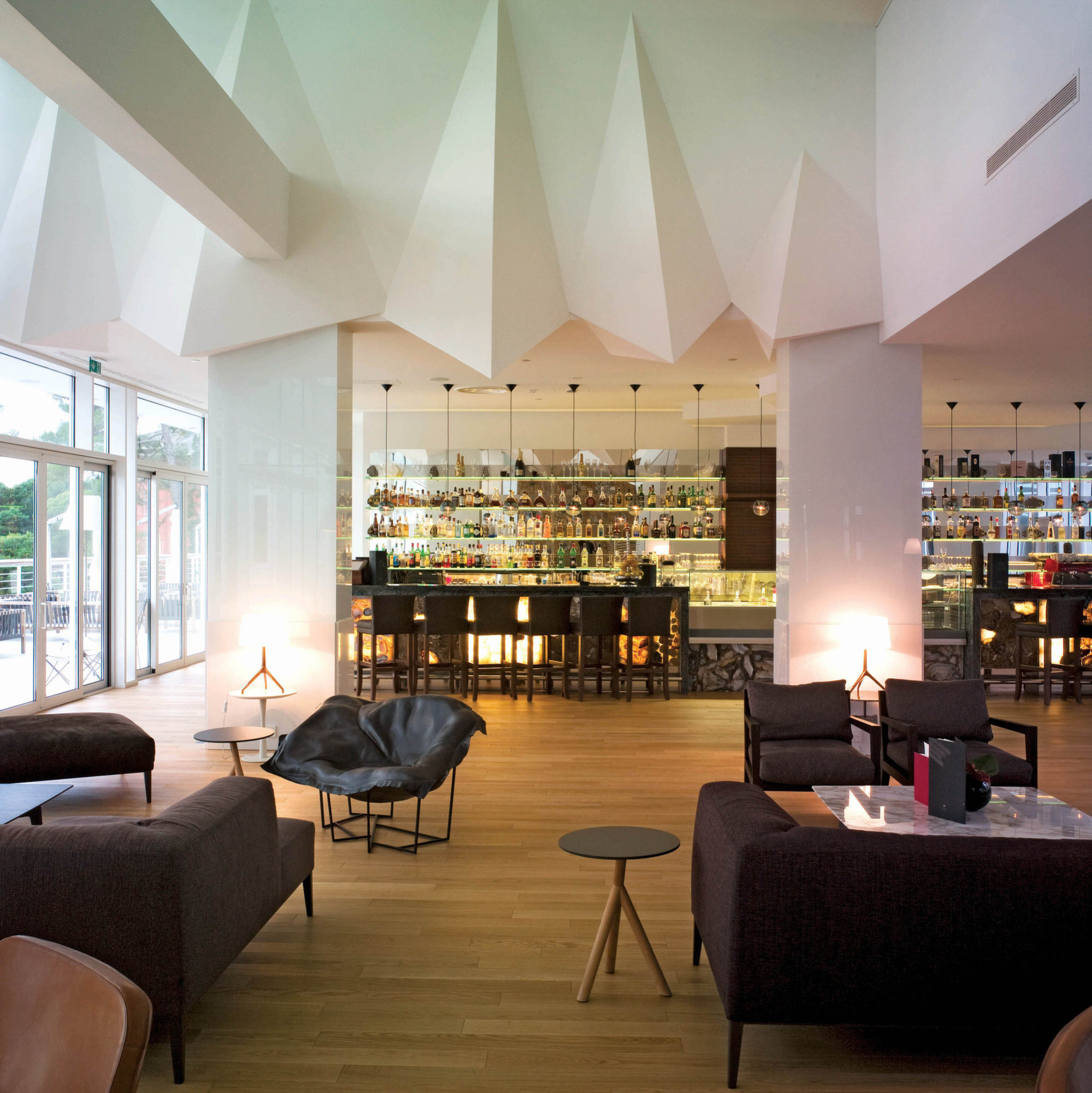
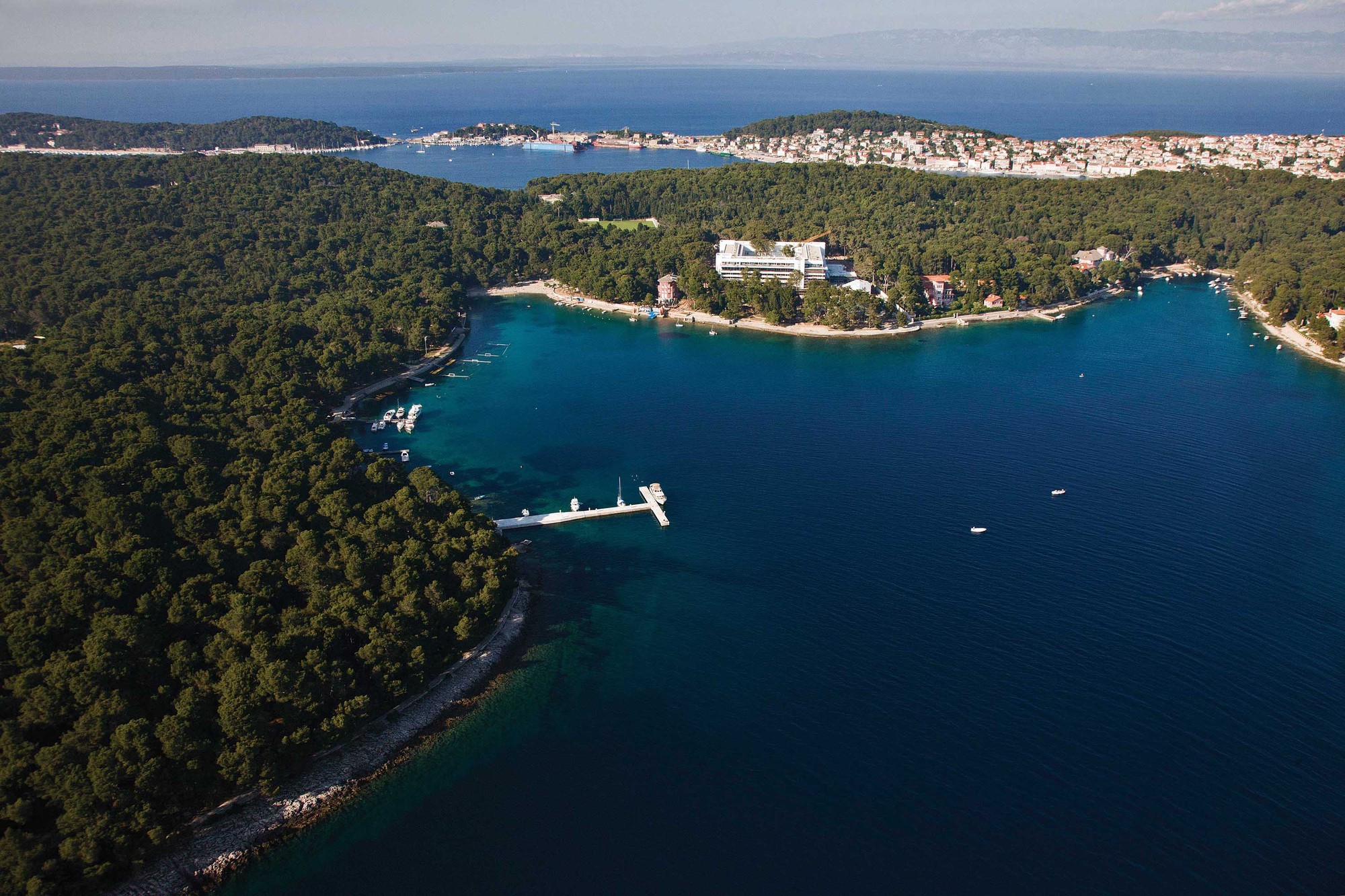
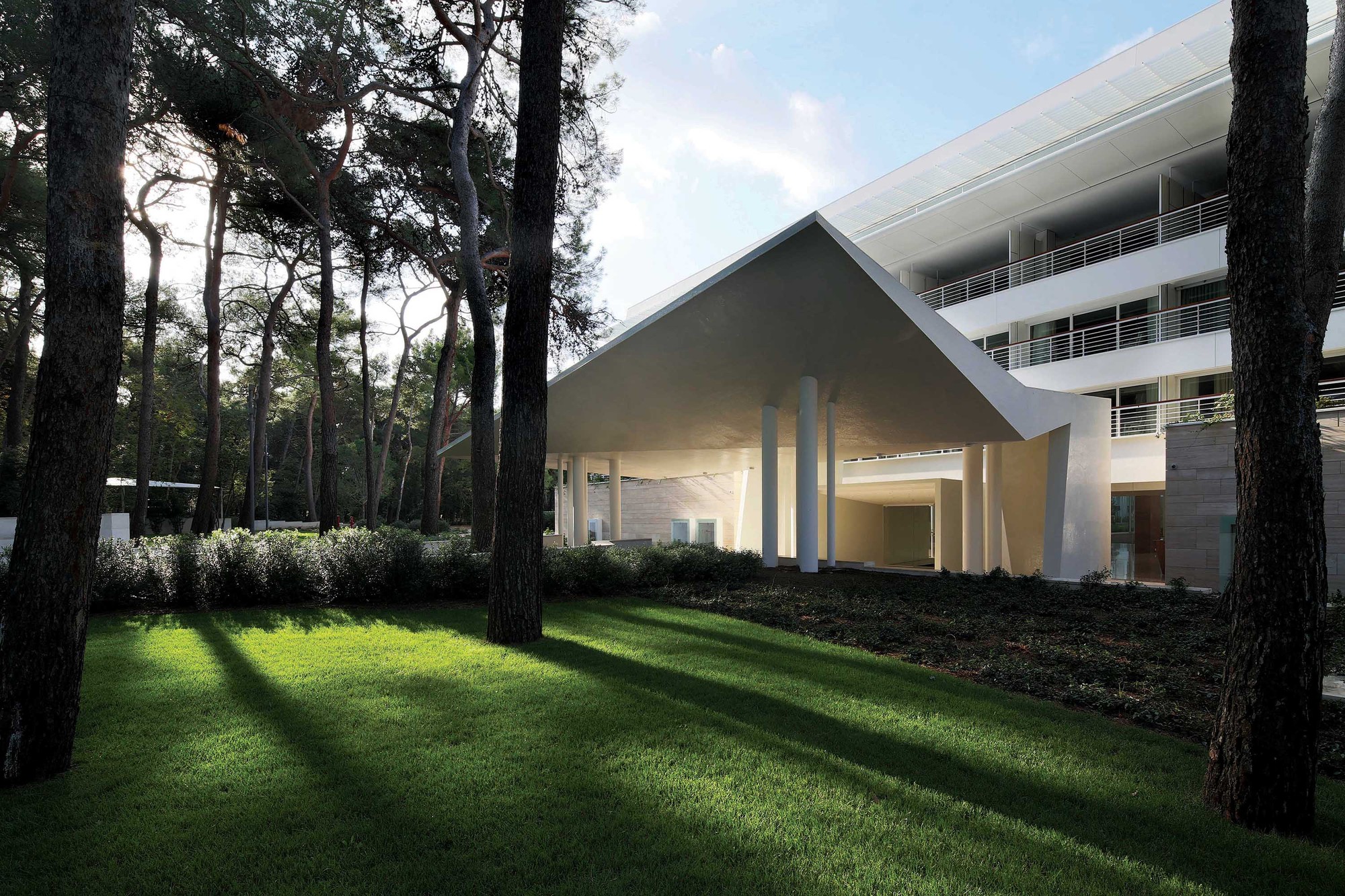
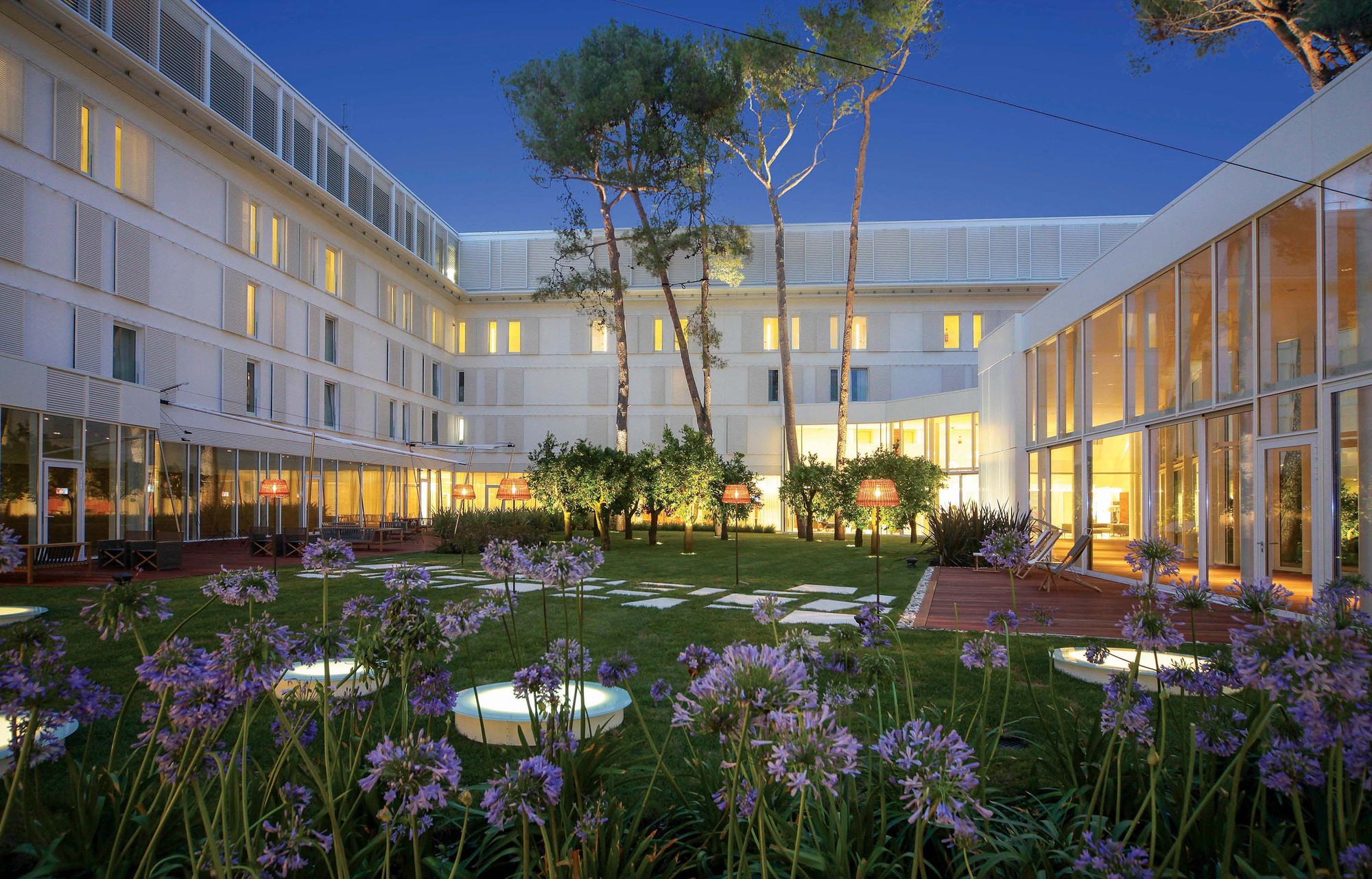
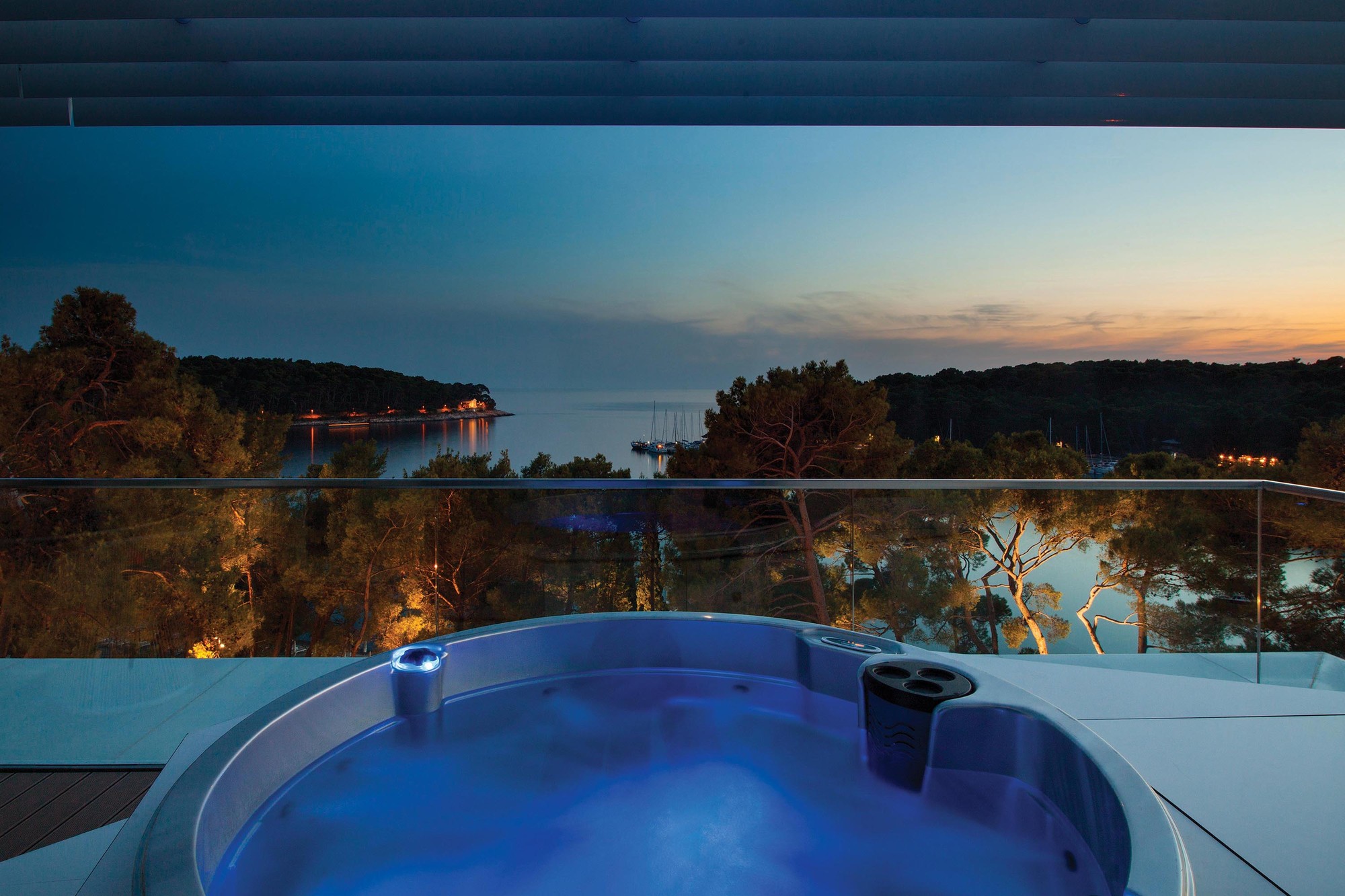
From the architect:
The original hotel Bellevue was built in 1967 based on the design of a distinguished Croatian architect Zdravko Bregovac. The hotel was built and furnished in accordance with the demands of the time, but it did not fit into the concept of the new owner who perceived it as an exclusive place for relaxation and vacations.
The reconstruction and the extension of the existing hotel were started in the fall of 2013, with the aim of improving the standard of the service with regard to the spatial capacities and the equipment. The Bellevue Hotel experienced a thorough change within a very tight deadline; all projects and works were completed in the period of mere seven months.
Concept
The basic spatial concept of the hotel, one shaped around the central atrium has been preserved. It has been extended by the construction of a glazed passage which can be fully opened during the summer months, thus becoming a covered atrium area. The floors of the passage and the atrium terraces have been plated in teak wood and furnished in teak furniture covered with soft cushions. Next to the existing pine trees, orange, lemon and grapefruit trees have been planted in the atrium, as well as other indigenous plants. The new architectural elements introduced in the shaping of the façade are the expressed whiteness of the surfaces and the use of the horizontal brise-soleil system and shutters to create a dynamic rhythm of the surface.
The emphasis on the main axis of the hotel which leads to the sea has been additionally supported by the construction of a wide stone access staircase descending to the coastal promenade of Čikat Bay. On the other side of the hotel, the entrance is emphasized by a new spacious and voluminous eaves. The main public facilities of the hotel are located at the entrance level: the reception, the lobby, stores, a three-part congress hall (with the maximum capacity of 360 seats), two smaller meeting halls, a lounge bar and three restaurants of different sizes. Some of the rooms on the first floor have been torn down so the two-storey areas were created in the lobby and the lounge bar, which evokes the feeling of spaciousness, as well as enhances the perception of the vertical axis of the hotel.
In the process of designing public areas, the aim was to create a separate identity for each of the individual wholes. The lobby area floors are covered with terrazzo tiles, the restaurant and the lounge area with matt oak parquet of large dimensions, while the congress and meeting facilities are carpeted. The columns in the lobby have been cladded in Persian travertine, while the reception counter and wall claddings have been done in Indian Apple Veneer.
Composite stone consisting of ammonite and fossilized tree from Madagascar has been used for the lining of the wall of a part of the reception area and the wall of the lounge bar which extends over two storeys. Wall claddings of the restaurant have been finished in oak and walnut veneer and the wall claddings in artificial leather should also be mentioned. All equipment and furniture is of high quality and excellent design (by producers such as Poliform, Porada, Poltrona Frau, Cassina, Roda).
The colours are warm and natural, ranging from the dominant colour of sand to chocolate brown, orange and yellow. Sanitary facilities have been coated in slabs of Portoro, Rosso Lepanto, Paonazzo, Rosso Alicante and Arabescato Orobico Rosso marble.
The works of painter Tomislav Buntak, which have been exhibited in the lobby, the restaurant and the entrance area of the pool, greatly contribute to the unique atmosphere of respective areas. The terrace, which stretches along the southwest façade, includes the dining areas or areas for rest or relaxation with a drink.
The storey located below the entrance level includes the pool facilities, fitness and wellness, as well as a Spa clinic. The walls of the interior pool are covered with the painting done in mosaic tiles. The playful figure in movement encourages the idea of having fun in the water. The authors of the art pieces are Valentina Butumljević, Damjan Roce and Klara Rusan. The interior pool is protected by a glazed dome and the area is furnished with white deck chairs and tables, alongside with comfortable sofas of organic design (produced by Paola Lenti). The area is characterized by the colour white and the richness of natural light.
The outdoor pool and its sunbathing area are directly connected with the interior pool. The irregular shape of the outdoor pool has been divided into two levels which are connected by a waterfall. The height of the sunbathing area along the pool follows the logic of the pool itself. The area is furnished with white deck chairs with tables and comfortable sofas of teak wood. The lower level of the sunbathing area contains a pool bar. The sunbathing areas are covered by mobile canopies and adjustable parasols.
The fitness area includes the workout hall (Yoga, Pilates) and the gym with exercise equipment. The spa clinic and the fitness area are connected by a wide communication area with natural lighting provided by a line of roof domes. The domes also house big aquariums which are used as elements of spatial sequences. The spa zone consists of two parts; the beauty zone with different facilities which provide beauty treatments, as well as massages and relaxation programmes. The zone was envisioned as a very bright area, which is why white terrazzo was selected for the floor and bright onyx for partition walls. The whiteness and transparency are emphasized by flapping curtains dividing the area.
The dark colour of the Spa is in contrast with the whiteness of the zone and includes a line of showers, Finnish sauna (one up to 90°C, the other up to 120°C), Turkish bath, Tepidarium pool with cold water and the relax zone. The dark Terazzo is used for the floors; the walls have been cladded with dark red mosaic tiles and the partition onyx walls are in dark tones. The outdoor area in front of the wellness is planned so that the activities can also be done in the exterior; hydromassage bath tubs, deck chairs and massage areas are situated in the exterior area. On the other side of the area there is the exterior Finnish sauna with a cold pool and a hydromassage bath tub.
On the first and the second floors which have been prerserved, the number of accommodation units has been reduced in order to meet the contemporary standards regarding the size of the hotel room. The height of the areas has also already been set so the area is relatively low. The two added floors were devised and executed in a way that the accommodation units follow the exterior rim, while the hallway follows the rim of the atrium.All newly designed accommodation units have spacious covered terraces cladded with teak boards. Some accommodation units contain hydromassage bath tubs.
Architects: Rusan arhitektura
Location: Lošinj, Croatia
Architect in Charge: Andrija Rusan
Area: 35000.0 sqm
Project Year: 2014
Photographs: Senja Vild, Damir Fabijanic, Hrvoje Serdar, Borko Vukosav
Authorial Group: Jasminka Rusan, Nikolina Mikuliĉić, Tihomir Knezić, Architectural office Rusan Arhitektura
Authorial Collaboration: Janko Kralj, Petra Franić, Bruno Krunić, Lana Petrak, Lana Trobentar, Isabel Moreno Moreno, Mateja Nosil.
Hotel rooms- architecture and design: Amira Ĉaušević and authorial group Tatjana Bilek Ţurić, Ljerka Kabelka, Nataša Škarić
Lighting Design: Dean Skira & authorial group: Tomislav Godena, Goran Herak, Maja Lipovĉić Curĉić, Dean Matika, Godvin Poropat, Boţidar Pustjanac.
Landscape Design: Nataša Tiška Vrsalović, Ţeljko Radišić, Monika Kameneĉki, Irena Kolega
Staff Uniform Design: Branka Donassy
Visual Identity: Bojan Matoš, Luka Kuharić, Pavao Kuharić
